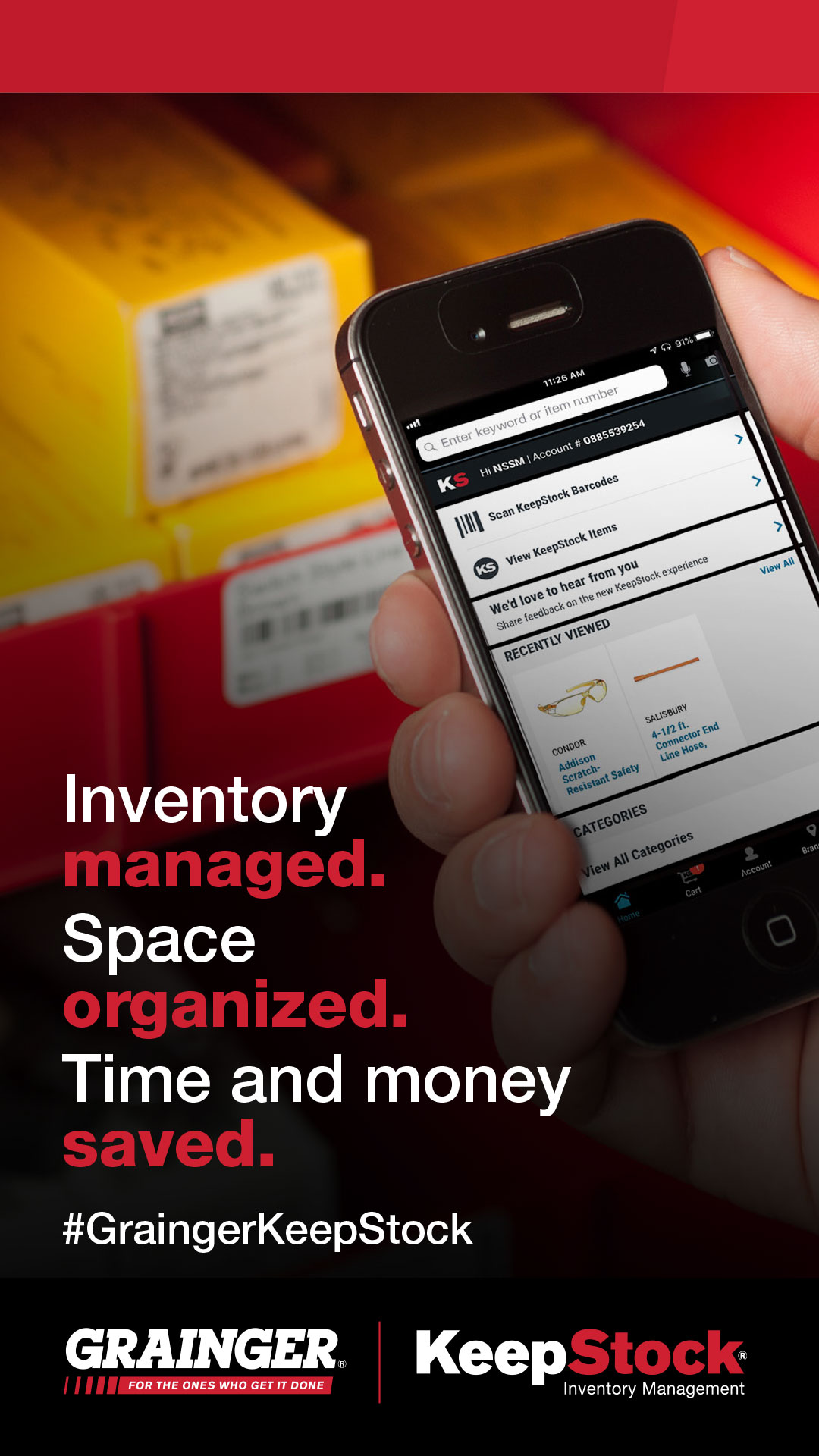

Why Firehouses Need the Right Inventory Management System
By Grainger Editorial Staff 10/7/19


Fire departments with solid inventory management strategies and reliable partners are free to focus on their core mission of protecting the community and saving lives.
On the surface, a fire department’s core mission is clear enough: when there’s a fire or other type of emergency, firefighters quickly respond and do everything they can to save lives and minimize damage.
The process sounds straightforward enough in theory, but the reality is that running a public safety organization involves various levels of complexity, from critical staffing, budget and equipment decisions, to how to procure items and deploy proper inventory to keep stations running efficiently.
“Managing consumable and commodity goods can be a difficult task in the fire service,” says Nate Nevala, Grainger’s Public Safety Program Manager, “with elastic demand over three shifts and multiple locations with different personnel, there are unique challenges when it comes to inventory controls, such as stockouts, hoarding or excessive inventory." Fire chiefs can avoid this and other inventory challenges by developing a strategy that centers on:
- Stocking the optimal inventory levels that meet the department’s daily, weekly and monthly needs
- Paying the right price for that inventory
- Working with a partner that consolidates the ordering process, eliminates paper orders and handles some or all of the inventory management responsibilities
- Understanding specific “reorder” points for the inventory (the points at which specific items should be replenished)
- Maintaining the right inventory levels so firefighters can access supplies where and when they need them
The Benefits of Proper Fire Department Inventory Management
For the typical fire department, “inventory” includes a wide variety of consumable and non-consumable products. This could range from station supplies, such as truck wash, paper towels and hand soap, to rescue gear, equipment and Emergency Medical Services (EMS) products. These supplies need to be continually replenished and their gear located in a place where they can easily grab it and go.
With proper inventory management, problems like cramped storage areas go away, as does the worry that supplies won't be available when firefighters need them. When inventory is managed properly, it also reduces waste, allows for more budgeting flexibility, and helps firefighters focus on what’s most important.
The additional benefits that not everyone considers include the opportunity to reduce risks (since firefighters have everything they need to be able to do their jobs) and better overall station morale (since firefighters don’t have to run around, looking for their basic supplies).
Three Ways to Get Started with Inventory Management
For the fire chief who is either just starting to understand the importance of an inventory management system, or looking for a new approach, the opportunities for immediate improvement and cost savings are plentiful. In fact, manual inventory management systems are likely costing your fire department in ways you may not have even considered—from storage and overstock spend to wasted time and lost productivity.
The good news is that inventory management doesn’t have be a disruptive event for fire departments. Here are three starting points to ensure a smooth transition to a more organized approach to inventory management:
Develop a Plan
A plan is at the heart of inventory management and inventory control, and will determine how you stock, order and manage products for your fire station. Without a plan, you may make some progress, but will ultimately struggle to create a robust inventory management system. The goal at this stage is not necessarily to get it right, but to align the entire team on a single vision and set of goals for your inventory. Starting a plan means taking a baseline of your current process: identifying what is actually on shelves and where it is stored, counting inventory and recording who is involved in ordering and managing stock.
The current system might be confusing, with obvious gaps and ad-hoc procedures. Chances are, there is a reason why the process works the way it does, and you will need to understand and account for these unique methods as you develop the plan.
Without a roadmap, your system will struggle as it grows and might break under the pressure of more requirements and processes. Review and update your plan frequently so that it is adapting to fresh concerns.
Reset Inventory
As you kick off a major inventory management effort, you need to understand exactly what you have on hand and remove any current waste. Without taking this step, your fire department will continue to carry potentially overstocked or unneeded products, not only filling storage space but also wasting money. Waste grows as firefighters struggle to find the right products and when they spend time traveling to and digging through closets and storerooms. Being reactionary is an expensive and impossible-to-scale approach.
After auditing your closets, stockrooms, fire trucks and other locations for current supplies, immediately get rid of unused stock and oversupply. Once you have tracked and monitored your inventory, your management program will have a clean foundation to grow from.
Leverage the Power of Data
The earlier you start collecting the right data, the sooner you can realize insights and areas of improvement from your process. As you begin establishing an inventory management system for your fire station, ensure that data is included in the plan and measured accurately.
By focusing on a few key metrics and measurements, such as current stock, stock turnover and order history, fire departments can immediately become more efficient. The more data that fire chiefs incorporate into their early inventory management plans, the more effective those systems will be over time.
Finding the Right Fire Department Inventory Management Partner
Fire chiefs across the country can use the tips in this article to minimize their most pressing inventory challenges and helping firefighters do their jobs more efficiently and effectively. “We’re giving them time back into their days,” says Nevala, “and helping to raise overall satisfaction levels because people are getting the things they need faster and easier than ever before.”
With many departments still using clipboards, spreadsheets, phone calls and other manual methods of generating and tracking orders, keeping up with day-to-day inventory needs is both cumbersome and expensive. By creating a solid inventory management strategy that’s supported by a consolidated provider, fire chiefs can help their departments be more efficient and save money in the process.
The information contained in this article is intended for general information purposes only and is based on information available as of the initial date of publication. No representation is made that the information or references are complete or remain current. This article is not a substitute for review of current applicable government regulations, industry standards, or other standards specific to your business and/or activities and should not be construed as legal advice or opinion. Readers with specific questions should refer to the applicable standards or consult with an attorney.







